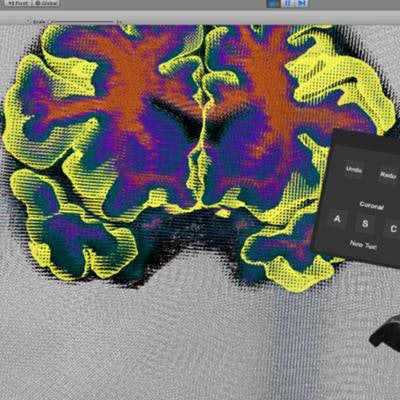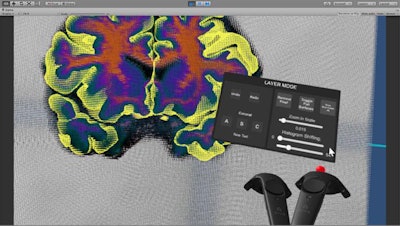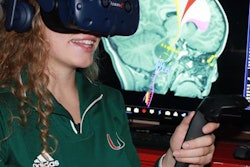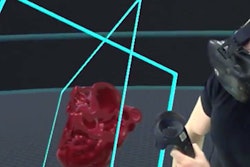
Using new virtual reality (VR) software to correct segmentation errors on MRI scans allowed users to complete the task more quickly and accurately compared with using a conventional 2D interface in a new study, published online July 20 in the Journal of Digital Imaging.
Segmenting MRI scans has been a crucial aspect of the neuroimaging workflow for several decades, wrote lead author Dominique Duncan, PhD, and colleagues from the University of Southern California. Manual segmentation is widely regarded as the gold standard, but clinicians are turning to automated segmentation increasingly more to improve processing speed and consistency. However, automatic segmentation software is still imprecise and requires users to manually correct errors.
Hoping to establish a more efficient way to correct MRI segmentation errors, the group developed its Virtual Brain Segmenter software, which utilizes VR technology as a user-friendly interface for correcting images.
 The Virtual Brain Segmenter interface. Image courtesy of Dominique Duncan, PhD.
The Virtual Brain Segmenter interface. Image courtesy of Dominique Duncan, PhD.The researchers tested the viability of the software by having 30 individuals correct a single error on a previously segmented MRI scan using either open-source software (FreeSurfer) in a standard 2D interface or the Virtual Brain Segmenter software in a VR headset (Vive, HTC). Before performing the task, each participant viewed a five-minute demonstration that explained how to identify and remove voxels representing the optic nerve from MRI scans, a common error in automated segmentation.
On average, the participants completed segmentation 68 seconds more quickly when using the VR software compared with the 2D interface (p < 0.001). They also achieved higher accuracy with the VR method in this study than most nonexperts did with the conventional technique in a previous trial by Ganz et al.
| 2D interface vs. virtual reality for correcting MRI segmentation errors | ||
| Mean | Conventional 2D interface | VR software |
| Time to complete correction | 231.85 sec | 163.81 sec |
| Precision | 42%* | 85% |
| Sensitivity | 82%* | 86% |
In follow-up surveys, all the participants stated that they preferred the VR method over the standard technique. Most added that using virtual reality was more exciting, and about a third claimed that it was more intuitive and easier to interact with than the conventional method, despite having never before used a VR headset.
The researchers plan to continue making improvements to the Virtual Brain Segmenter software, such as adding sound effects and a scorekeeping system, to keep it visually engaging and accessible for a wide audience. They also plan to incorporate a training phase that would provide users with feedback on their accuracy.
"We see this tool as potentially quite useful for correcting automated segmentation errors more effectively than a typical 2D screen/cursor interface," the authors wrote. "We hope this study will be the beginning of a multistage project to create a gamified virtual reality program that can be utilized by a crowd to correct segmentation errors."



.fFmgij6Hin.png?auto=compress%2Cformat&fit=crop&h=100&q=70&w=100)




.fFmgij6Hin.png?auto=compress%2Cformat&fit=crop&h=167&q=70&w=250)











